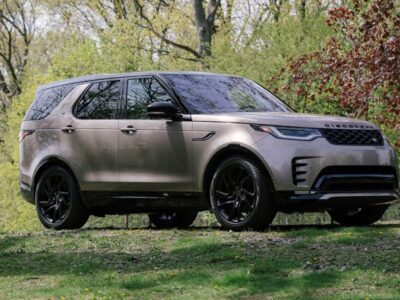When it comes to snowmobiling, choosing the right helmet is essential for both safety and comfort. A good helmet not only protects you from the elements but also plays a crucial role in preventing injuries during your ride. With various styles and features available, selecting the perfect snowmobile helmet can be overwhelming, especially if you’re new to the sport. To help you make an informed decision, here are six key things to consider when choosing a snowmobile helmet.
1. Safety Standards and Certifications
The most important factor when selecting a snowmobile helmet is safety. Helmets are designed to protect your head in the event of an accident, and not all helmets are created equal. Look for helmets that meet or exceed established safety standards.
- DOT Certification: In the United States, the Department of Transportation (DOT) sets the minimum safety standards for helmets. Ensure your helmet has a DOT sticker, indicating it meets these standards.
- ECE Certification: If you’re in Europe or looking for an additional layer of safety assurance, helmets with ECE certification have passed rigorous testing for impact absorption, strap strength, and other safety features.
- Snell Certification: For the highest level of safety, consider a helmet with Snell certification. Snell helmets are tested for extreme impact scenarios and offer the best protection.
Key Takeaway: Always check for safety certifications like DOT, ECE, or Snell to ensure your helmet provides adequate protection.
2. Helmet Style and Fit
The style of your snowmobile helmet is more than just a matter of preference; it also affects your comfort and safety. There are three main types of snowmobile helmets:
- Full-Face Helmets: Provide maximum protection, covering your entire head, including your chin and face. They are ideal for riders who prioritize safety and want the best protection from the cold.
- Modular Helmets: Offer the same protection as full-face helmets but with the added convenience of a flip-up chin bar, allowing for easier communication and ventilation without removing the helmet.
- Open-Face Helmets: Cover the top, back, and sides of your head but leave your face exposed. These helmets are lighter and offer better ventilation but less protection for your face.
Regardless of the style, the fit is crucial. A helmet should fit snugly without being too tight, and it should not move around when you shake your head. Remember that different brands may fit differently, so try on several options to find the best fit.
Key Takeaway: Choose a helmet style that matches your riding needs and ensure it fits properly for maximum comfort and safety.
3. Ventilation and Breathability
Snowmobiling can be physically demanding, and your helmet should provide adequate ventilation to prevent overheating and reduce fogging. Proper ventilation also helps manage moisture, keeping you dry and comfortable during your ride.
- Adjustable Vents: Look for helmets with adjustable vents that allow you to control airflow. This is particularly useful in changing weather conditions, where you may need more or less ventilation.
- Breath Box and Chin Curtain: Some helmets come with a breath box or chin curtain to direct your breath away from the visor, reducing fogging and keeping you warm in cold weather.
- Moisture-Wicking Liners: A helmet with moisture-wicking liners will help manage sweat, keeping you dry and comfortable during intense rides.
Key Takeaway: Ventilation is key to comfort and visibility, so choose a helmet with features that allow you to regulate airflow and manage moisture effectively.
4. Visibility and Shield Options
Visibility is crucial when snowmobiling, especially in challenging weather conditions like snowstorms or low-light situations. The right visor or shield can make a significant difference in your overall experience.
- Dual-Lens Shields: These shields are designed to prevent fogging by creating an insulated barrier between the inside and outside of the shield. They are essential for maintaining clear visibility in cold weather.
- Electric Shields: For ultimate anti-fog protection, consider a helmet with an electric shield. These shields are heated to prevent fogging even in extreme cold.
- Tinted and Photochromic Shields: Tinted shields reduce glare from the sun, while photochromic shields automatically adjust to changing light conditions, offering the best visibility in varying environments.
Key Takeaway: Ensure your helmet has a high-quality shield that offers clear visibility, and consider options like dual-lens or electric shields for enhanced performance in cold conditions.
5. Comfort and Weight
Comfort is critical when choosing a snowmobile helmet, especially if you plan to ride for extended periods. A comfortable helmet allows you to focus on your ride without distractions.
- Helmet Weight: A lighter helmet reduces strain on your neck and shoulders, making it easier to ride for long durations. However, ensure the helmet still offers adequate protection despite its lighter weight.
- Padding and Liner: Look for helmets with removable and washable liners, as they can keep your helmet fresh and comfortable over time. High-quality padding adds to the overall comfort and fit.
- Noise Reduction: Some helmets come with features designed to reduce wind noise, which can enhance comfort and help you focus during your ride.
Key Takeaway: Choose a helmet that balances weight, comfort, and noise reduction to ensure an enjoyable and fatigue-free riding experience.
6. Compatibility with Communication Systems
If you ride in a group or like to stay connected while riding, consider a helmet that is compatible with communication systems. Many modern helmets are designed with built-in or optional mounts for Bluetooth communication devices.
- Bluetooth-Ready Helmets: Some helmets come with built-in speakers and microphone placements, making it easier to install a Bluetooth communication system.
- Aftermarket Compatibility: If your helmet doesn’t come with built-in options, ensure it has enough space and design features to accommodate aftermarket communication systems.
Key Takeaway: A helmet that is compatible with communication systems adds convenience and enhances your riding experience, especially during group rides or long trips.
Conclusion
Choosing the right snowmobile helmet is a crucial decision that impacts your safety, comfort, and overall riding experience. By considering factors like safety standards, fit, ventilation, visibility, comfort, and compatibility with communication systems, you can find a helmet that meets your specific needs and enhances your time on the snowmobile. Remember, investing in a high-quality helmet is an investment in your safety and enjoyment, ensuring that you can ride with confidence in any conditions.












Comments